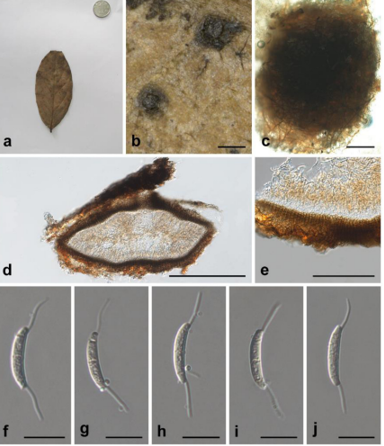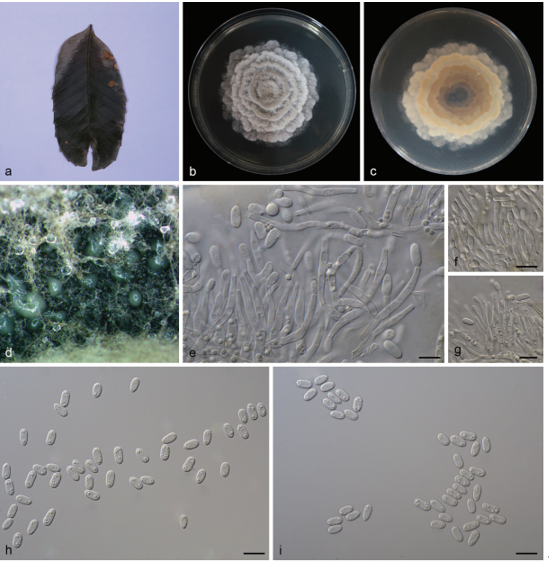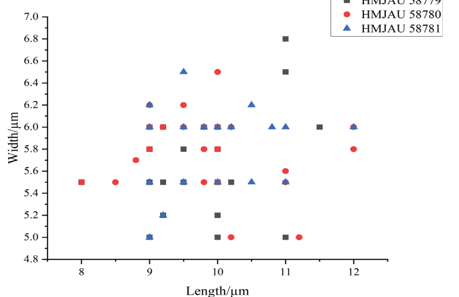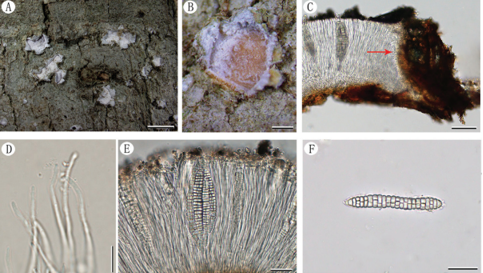Hirsutella hongheensis D.P. Wei & K.D. Hyde 2020
Index Fungorum number: IF556251; Facesoffungi number: FoF 05827
Holotype: CHINA, Yunnan Province, Honghe County, Jiayin Villige, Amushan protection area, On unknown insect, 23 October 2018, Deping Wei, (HKAS102511, holotype).
Morphological description
Asexual morph: Mycelial subiculum bright yellow in superficial layer, becoming white towards inner layer, cottony, dense, completely covering the host. Mycelium 1.5–2.9 µm ( x = 2.2 µm, n = 50) wide, hyaline, thin-walled, smooth-walled, septate. The hyphal cells usually become thick-walled and swollen, then developing into chlamydospores. Hirsutella phialides-like cells 7.6–14.3 × 3.1–4.6 µm ( x = 9.7 × 3.9 µm, n = 10) forming from inflated hyphae, subglose, ellipsoid, broadly cyclindrical, hyaline, slightly guttulate, bearing a needle-like neck (2.1–3.9 × 0.4–1.1, x = 3 × 0.7 µm, n = 10). Chlamydospores 4.2–12.7 × 3.1–17.6 µm ( x = 7.7 × 4.8 µm, n = 100), subglobose, thick-walled, smooth-walled, hyaline, with yellow guttules, typically adhering in chains.
Habitat: On an unknown insect.
Distribution: In China.
GenBank Accession: ITS: MN017176; LSU: MN017175; SSU: MN017177; TEF1: MN733824.
Notes: Attempts were made to cultivate the inner mycelium of the subiculum on PDA medium but growth was not observed. Therefore, the morphological observation and the sequencing of ITS, LSU, SSU and TEF1 gene regions were conducted based on the dried specimen. Phylogenetically, our collection has close affinity with Hirsutella versicolor (ARSEF 1037) and is restricted to the H. guyana clade with significant support (100% ML, 100% MP and 100% PP, Fig. 60). H. versicolor was initially described from a leafhopper host collected in Nuwara, Sri-Lanka (Petch 1932). The lectotype of H. versicolor was designated by Minter & Brady (1980), with a hand-drawing of the phialides and conidia attached. This reference species has a greyish to orange-yellow byssoid mycelial subiculum radiating on the leaf-hopper host, conoid or flask-shaped phialides that narrow into 2–3 slender necks and narrow-cymbiform or narrow-oval hyaline conidia (Petch 1932). Not one of these characters was observed in our collections.
Reference: Hai‑Sheng Yuan1,2· Xu Lu1,2 · Yu‑Cheng Dai3 ·
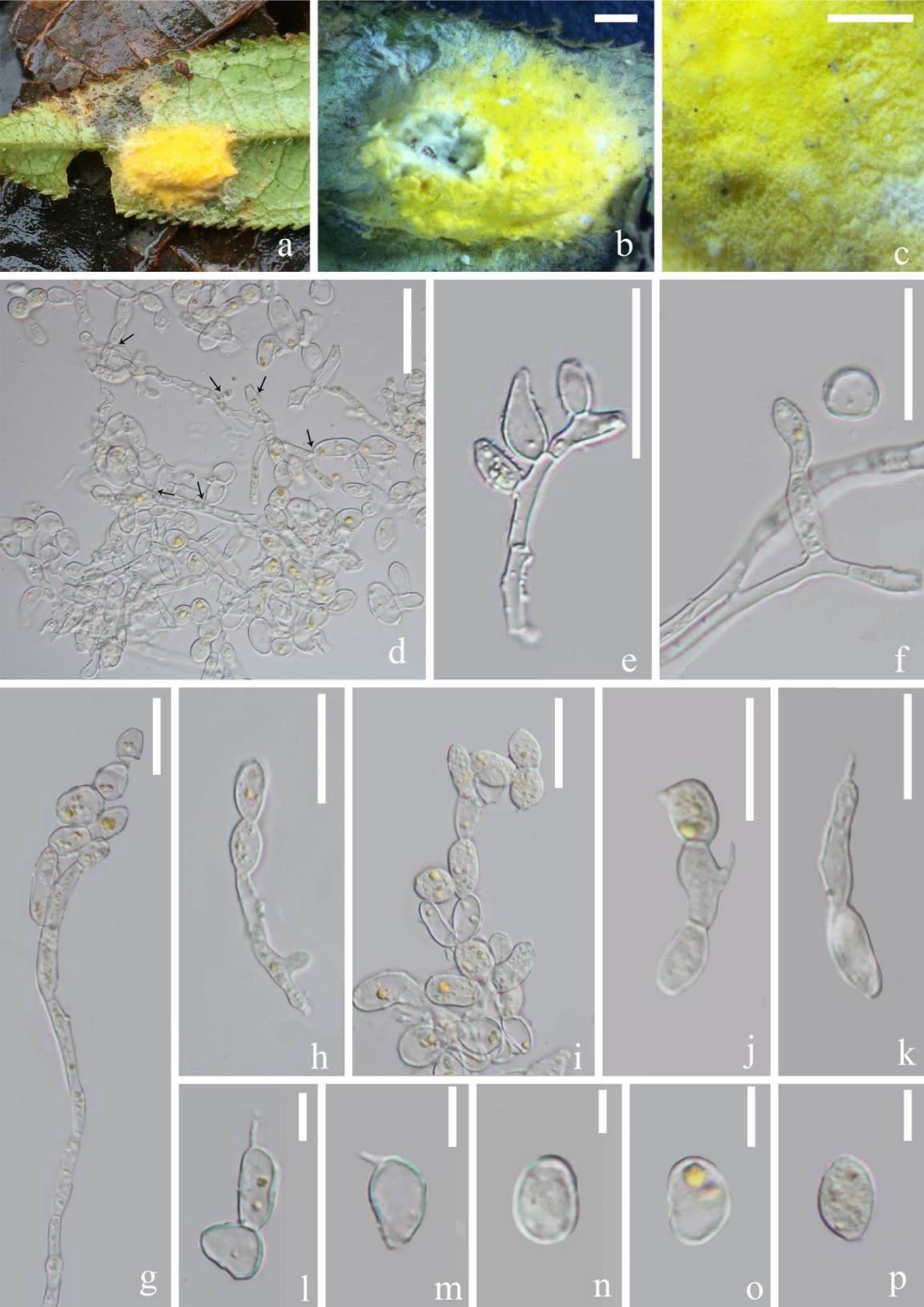
Hirsutella hongheensis (AMS12, holotype). a, b.Yellow with black arrows. i Chlamydospores adhering in chain. k–m Phimycelial subiculum associated with host. c Enlargement of superfi- alides-like cells with short necks. n–p Chlamydospores. Scale bars: cial mycelium. d–h Chlamydospores forming from hyphae indicated b = 1000 µm, c = 500 µm, d, e = 20 µm, f–k = 15 µm, l-p = 5 µm.


